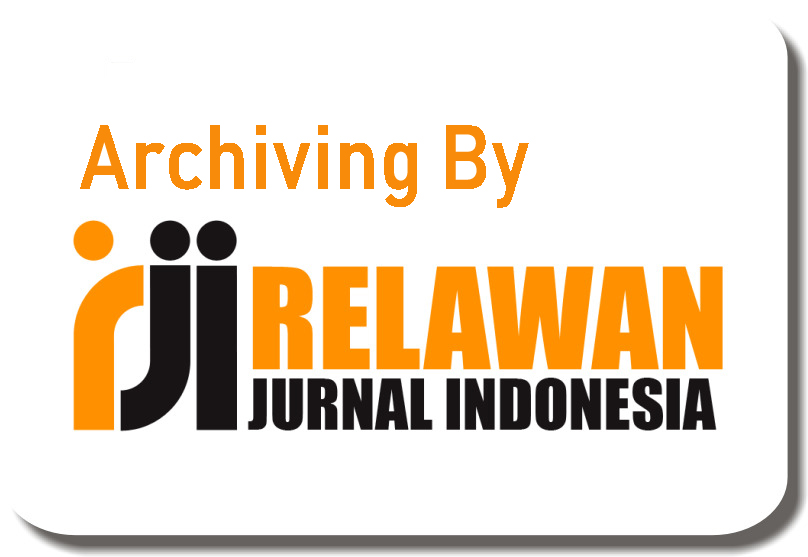Tackling Love Scams: A Review of the Role of the Police in Public Education
Abstract
Cybersecurity remains a global problem that can cause major losses worldwide. Technological advances have created new motives for crimes such as love scams. Love scams are frauds that take advantage of emotional relationships to exploit victims for personal gain. The factors causing love scams include the victim's emotional vulnerability, need for attention, and lack of digital literacy. Therefore, it is important for the public to be aware of the various modes of love scams and how to overcome them. This research uses a qualitative method, with data obtained through interviews with 11 sources. Data analysis was carried out through data reduction, data presentation, and data verification. The research results show that, based on Dittipidum data from the Criminal Investigation Department of the Indonesian National Police, there are 18 identified love scam perpetrators with losses reaching 86.3 billion rupiah. Korbinmas Baharkam POLRI has an important role in conducting community development. The steps taken by POLRI include education through socialization, collaborative and community-oriented approaches, and critical intervention and support services. Education that considers the emotional aspect can effectively increase public awareness.
Keywords
Full Text:
PDFReferences
Alavi, K., Mahbob, MH, & Sooed, MSA (2020). Communication Strategy Of Cyber Love Crime Towards Professional Women. Jurnal Komunikasi: Malaysian Journal Of Communication , 36 (3), 296–311. Https://Doi.Org/10.17576/JKMJC-2020-3603-18
Alessa, L., Moon, S.K., Valentine, J., Hepburn, M., Kliskey, D., & Andrew. (2021). Surprise Ad Suspense: How To Intelligence Community Forgot The Future. The International Journal Of Intelligence, Security, And Public Affairs . Https://Doi.Org/Https://Doi.Org/10.1080/23800992.2021.2006954
Anesa, P. (2022). Fighting Cybercrime Through Linguistic Analysis. In Language As Evidence: Doing Forensic Linguistics (Pp. 419–438). Springer International Publishing. Https://Doi.Org/10.1007/978-3-030-84330-4_12
Buchanan, T., & Whitty, M. T. (2014). The Online Dating Romance Scam: Causes And Consequences Of Victimhood. Psychology, Crime And Law , 20 (3), 261–283. Https://Doi.Org/10.1080/1068316X.2013.772180
Caviglia, F. (2002). Lie Detecting As A Step Towards Critical Literacy. L1 Educational Studies In Language And Literature , 2 (3), 179–220. Https://Doi.Org/10.1023/A:1021356011948
Chiarini, A., & Kumar, M. (2022). What Is Quality 4.0? An Exploratory Sequential Mixed Methods Study Of Italian Manufacturing Companies. International Journal Of Production Research , 60 (16), 4890–4910. Https://Doi.Org/10.1080/00207543.2021.1942285
Chin, J. (2021). Love Cheats: The Psychology Of Love Scams. In Introduction To Cyber Forensic Psychology: Understanding The Mind Of The Cyber Deviant Perpetrators (Pp. 185–203). World Scientific Publishing Co. Https://Doi.Org/10.1142/9789811232411_0009
Chuang, J.-Y. (2021). Romance Scams: Romantic Imagery And Transcranial Direct Current Stimulation. Frontiers In Psychiatry , 12 . Https://Doi.Org/10.3389/Fpsyt.2021.738874
Halford, E., & Davies, A. (2021). Safeguarding Children: Early Trends Of A Police School-Based Intervention Program. Policing (Oxford) , 15 (4), 2269–2280. Https://Doi.Org/10.1093/Police/Paab046
Hammond-Errey, M., & Ray, K. (2021). A New Methodology For Strategic Assessment Of Transnational Threats. Police Practice And Research , 22 (1), 40–56. Https://Doi.Org/10.1080/15614263.2019.1699411
Hossain, G., Hurt, T., & Shin, M. (2024). WIP : Fundamentals On Cyber Fraud Detection And Investigation: Empowering High School Students For A Secure Digital Future. Proceedings - Frontiers In Education Conference, FIE . Https://Doi.Org/10.1109/FIE61694.2024.10893042
Inzunza, M., & Carlsson, N. (2023). Crime Prevention In Colombia: A Pilot Study. International Journal Of Comparative And Applied Criminal Justice , 47 (3), 279–298. Https://Doi.Org/10.1080/01924036.2021.1992640
Jakobsson, N., & Gerell, M. (2023). Evaluating The Impact Of An Informational Postcard Campaign On Telephone Scams Targeting The Elderly. Nordic Journal Of Criminology , 25 (1). Https://Doi.Org/10.18261/Njc.25.1.2
Kamaruddin, S., Rosli, WRW, Abd Rani, AR, Azlinbte Md Zaki, NZ, & Omar, MF (2020). When Love Is Jeopardized: Governing Online Love Scams In Malaysia. International Journal Of Advanced Science And Technology , 29 (6), 391–397. Https://Www.Scopus.Com/Inward/Record.Uri?Eid=2-S2.0-85084051470&Partnerid=40&Md5=629fb28e44c4f672bf50d1a17abe978f
Kydd, M., Shepherd, L.A., Szymkowiak, A., & Johnson, G.I. (2024). Love At First Sleight: A Review Of Scammer Techniques In Online Romance Fraud. In OC, RP, RA, EA, BX, HH, & JM (Eds.), Springer Proceedings In Complexity (Pp. 327–341). Springer Science And Business Media BV Https://Doi.Org/10.1007/978-981-99-6974-6_18
Lee, K.-F., Chan, M.Y., & Mohamad Ali, A. (2023). Self And Desired Partner Descriptions In The Online Romance Scam: A Linguistic Analysis Of Scammers And General User Profiles On Online Dating Portals. Crime Prevention And Community Safety , 25 (1), 20–46. Https://Doi.Org/10.1057/S41300-022-00169-7
Leemis, R. W., Espelage, D. L., Basile, K. C., Mercer Kollar, L. M., & Davis, J. P. (2019). Traditional And Cyber Bullying And Sexual Harassment: A Longitudinal Assessment Of Risk And Protective Factors. Aggressive Behavior , 45 (2), 181–192. Https://Doi.Org/10.1002/Ab.21808
Lu, H.Y., Chan, S., Chai, W., Lau, S.M., & Khader, M. (2020). Examining The Influence Of Emotional Arousal And Scam Preventive Messaging On Susceptibility To Scams. Crime Prevention And Community Safety , 22 (4), 313–330. Https://Doi.Org/10.1057/S41300-020-00098-3
Niman, S., Parulian, T.S., & Rothhaar, T. (2023). Online Love Fraud And The Experiences Of Indonesian Women: A Qualitative Study. International Journal Of Public Health Science , 12 (3), 1200–1208. Https://Doi.Org/10.11591/Ijphs.V12i3.22617
Oloo, O.D. (2022). Online Digital Platform Use By Adolescents In Kenya. Journal Of Children And Media , 16 (2), 261–270. Https://Doi.Org/10.1080/17482798.2021.1969254
Pangestu, MAD, Muhammad, A., & Tando, CE (2022). Optimizing The Role Of Correctional Intelligence In Early Detection Of Public Order Disturbances In Kayuagung Class Iib Prison. Journal Of Education And Counseling , 4 (6), 4307–4315.
Saad, ME, & Norul Huda Sheikh Abdullah, S. (2018). Victimization Analysis Based On Routine Activity Theory For Cyber-Love Scam In Malaysia. In AKAZ, MM, & SZ (Eds.), Proceedings Of The 2018 Cyber Resilience Conference, CRC 2018 . Institute Of Electrical And Electronics Engineers Inc. Https://Doi.Org/10.1109/CR.2018.8626818
Sharmeen, S., Ahmed, YA, Huda, S., Kocer, BS, & Hassan, MM (2020). Avoiding Future Digital Extortion Through Robust Protection Against Ransomware Threats Using Deep Learning Based Adaptive Approaches. IEEE Access , 8 , 24522–24534. Https://Doi.Org/10.1109/ACCESS.2020.2970466
Silver, J. M., Craun, S. W., Wyman, J. V, & Simons, A. B. (2021). A Coproduction Research Model Between Academia And Law Enforcement Responsible For Investigating Threats. Journal Of Policing, Intelligence And Counter Terrorism , 16 (1), 32–43. Https://Doi.Org/10.1080/18335330.2021.1880018
Thumboo, S., & Mukherjee, S. (2024). Digital Romance Fraud Targeting Unmarried Women. Discover Global Society , 2 (1). Https://Doi.Org/10.1007/S44282-024-00132-X
Wang, F., & Topalli, V. (2024). Understanding Romance Scammers Through The Lens Of Their Victims: Qualitative Modeling Of Risk And Protective Factors In The Online Context. American Journal Of Criminal Justice , 49 (1), 145–181. Https://Doi.Org/10.1007/S12103-022-09706-4
DOI: https://doi.org/10.31004/jele.v10i3.827
Refbacks
- There are currently no refbacks.
Copyright (c) 2025 Anggraeni Angelia Isabela, Indarto, Halimah, Albertus Wahyurudhanto

This work is licensed under a Creative Commons Attribution-ShareAlike 4.0 International License.



